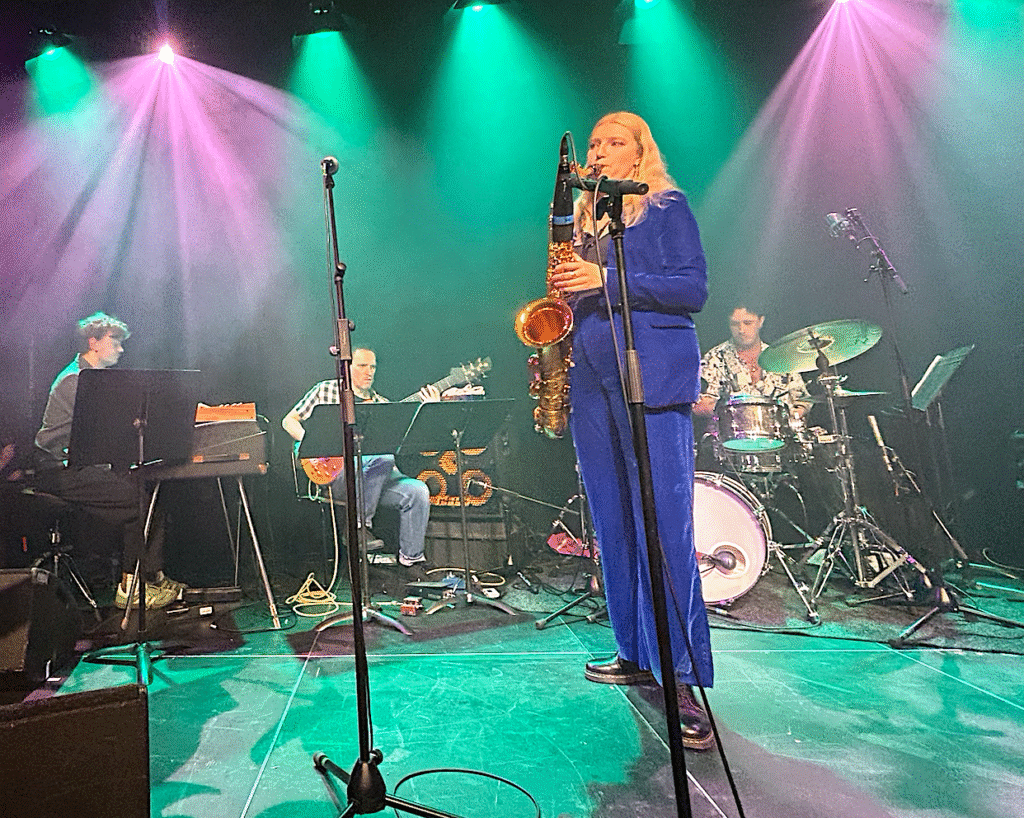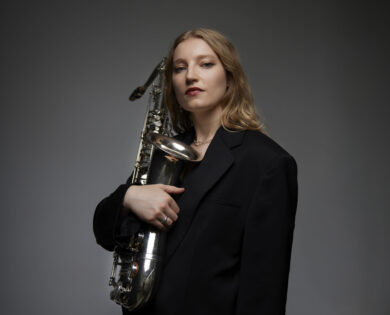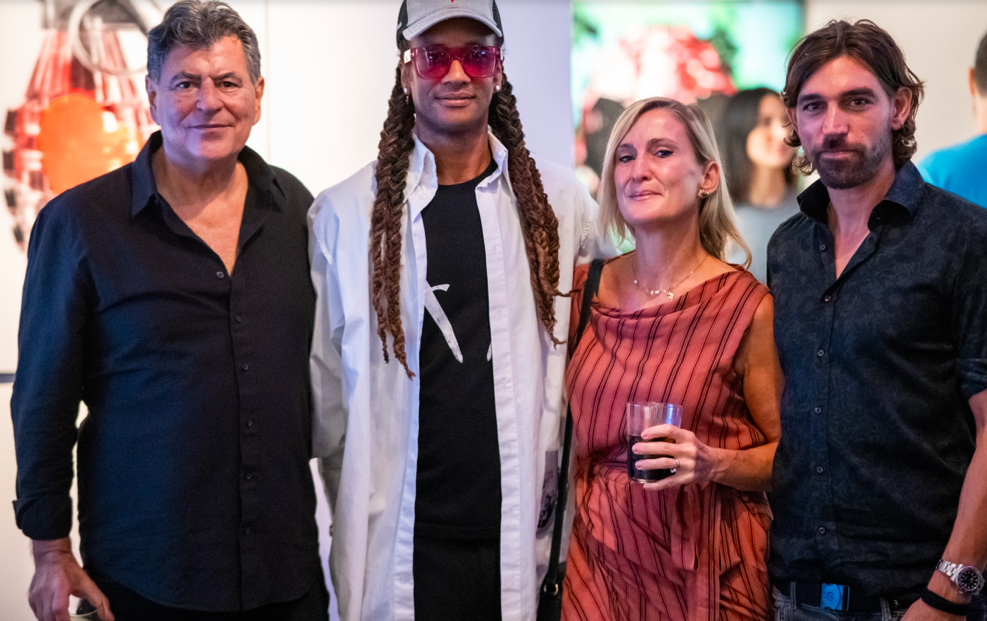Culturalee Innovators sits down with one of the most compelling young voices reshaping British jazz today: saxophonist, composer and now vocalist Emma Rawicz. Culturalee was captivated by her dynamic performance at Brighton Dome in November, which was followed by a performance at the Royal Festival Hall in London. Rawicz is celebrating the release of INKYRA, her boldest artistic statement yet. Four years in the making, the album opens a new chapter in her sonic world, fusing jazz with singer-songwriter intimacy, rock-tinged energy, and the exploratory spirit that has become her signature.
At just 23, Rawicz has already been hailed as “an astonishing talent” and “a force to be reckoned with,” but it’s her restless curiosity and fearless genre-blending that set her apart. INKYRA reflects a period of deep listening, experimentation, and collaboration, drawing on the influence of artists like Joni Mitchell while carving out a sound unmistakably her own. Whether on the stage of a major festival, in the acoustics of a concert hall, or within the immediacy of a standing venue, Rawicz brings a commitment to improvisation, connection, and artistic risk that continues to push the UK jazz landscape forward.
Culturalee caught up with Emma to talk about the evolution behind INKYRA, the creative spark she finds in different performance spaces, and how she sees the next wave of British jazz unfolding.

Your new album INKYRA feels like a bold step forward, blending singer-songwriter sensibilities, fusion, and rock energy with your jazz roots. What inspired this sound, and how did the collaboration with your bandmates shape the creative direction of the album?
This album has been incubating for a long time, with four years between the first ideas and its release. As a result, I feel like it has really been allowed to grow and evolve into the record I dreamed it could be, and a core part of that sound has certainly been the fusing of different genres, sounds, influences and ideas. I have always been a music lover first and foremost, and find it both inspiring and creatively nourishing to listen to many different styles of music, and I have always hoped that I might find a way to effectively bring together more of my favourite influences against the backdrop of what feels like my “home”, that is, jazz music. Prior to writing the music for this album, I found myself in what I call a “deep listening phase”: a time when I am listening to a very large amount of music, sometimes 6-8 albums per day, in a very focused way.
This particular phase focused in particular on the music of Joni Mitchell as well as some other singer-songwriters, and I think her genius not only as a musician but as a poet made a very deep impression on me. This definitely influenced the music I was writing for the new project, and I found myself reaching for more unusual, suspended folk-like harmonies that moved away from the typical jazz harmonic structures. I also loved taking small fragments from her lyrics that I felt particularly evoked a strong image or feeling, and treating them as “vignettes” of sorts that I could use as prompts for my composition. Beyond that, the musicians in my band played a huge role, pushing me to imagine new ways the music could sound, finding new spaces in the improvised material on live shows, and even spending hours rehearsing, workshopping the compositions and polishing them until they took their final form. It was absolutely a group effort, and the sound of the record owes so much to the inventiveness and generosity of spirit of the musicians in the band.
You’ve performed at some incredible venues this year, from the Love Supreme Festival to Brighton Dome and Southbank Centre. How do those live experiences influence the way you bring the music of INKYRA to life on stage?
For me, one of the best things about jazz and improvised music is its ability to authentically and effectively inhabit so many different spaces in the live setting. I draw a huge amount of inspiration from the venue we play on any given day, and see it as our duty to imagine a way to present the music that works specifically for whatever setting we find ourselves in that day. I also think that playing in many different types of space, from concert hall to standing venue to traditional jazz club, allows us to explore the full range of possibilities for the music, and find the one that helps us reach the audience most effectively on any given day. For example, in a concert hall we might linger on exploratory acoustic sections, while in a standing venue we might really dig into the groove-based elements within the music. Or, we might even do the opposite! I find it very inspiring to just see what comes out in the moment, and am very lucky to have a band who are fearless on stage, and never afraid to try something new.

You’ve been called “an astonishing talent” and “a force to be reckoned with,” but beyond the accolades, what first drew you to the saxophone, and what keeps you creatively curious and evolving as an artist today?
I first heard the saxophone when I was twelve years old, and was immediately hooked: I had never heard any instrument with such a fantastic sound and so much versatility, and I knew then that I had to find a way to get my hands on one of them! The same feelings appeared when I first came across jazz music, and I still feel like I have so much to learn and work on, not only as a saxophonist but as a jazz musician and improviser in general. I have always known that this is in itself a life’s work, and don’t ever intend to stop practising or learning. Most of the time I still feel like a beginner, and the sense of how much there is to learn and improve can feel overwhelming at times, but I still find the process of coming back to practise, to try and get just 1% better, extremely engaging and rewarding. The joy of discovering something new, be it a new album, a new favourite artist or even an area of my technique on the instrument I want to explore, is very invigorating for me, and I’m always trying to carve out time in my busy schedule when I can just practise and work slowly away at getting just a bit better at what I do.
At just 23, you’ve already achieved a huge amount, from your early self-released debut to your recent work with ACT and your orchestral projects. How do you balance the drive to experiment and grow musically with the realities of leading and managing so many ensembles?
I would say that balance is something I am still trying to figure out! I always feel driven by my enthusiasm for all the different projects I lead and participate in, and I do always have about five new ideas that I want to realise for new music, new collaborations, new bands and more. However, this enthusiasm and excitement can often conflict with the realities of being a busy touring musician, not least because there simply aren’t enough hours in the day to do it all! Luckily, I am reasonably good at planning and managing my time, and I do schedule things very far in advance which usually allows me to fit it all in. One of my goals for the future is to find a way of doing that better allows for rest time, as its very easy to start feeling very exhausted and burnt out without realising it!
The Jazz Connections series at Brighton’s Studio Theatre is all about showcasing new voices in British jazz. As someone helping define that new wave, what do you think makes this current moment in UK jazz so exciting, and what conversations do you hope your music will spark among listeners and fellow artists?
I think that one of the things that makes UK jazz so exciting is its extreme breadth and depth. I really feel that there is a space for any kind of music in the UK scene, and an audience for it too, which really allows people to present exactly the music they believe most strongly in at any given time. It is so important to have the spaces for artists in the UK to experiment and present their new ideas and projects, and it’s amazing that Brighton Dome is becoming one of those spaces for jazz and improvised music.
This record is one I feel very strongly about, and while I was very excited and ready for it to come out, I was also a little nervous as it felt more ambitious and stylistically ambiguous than anything I had put out before, and wasn’t sure what the reaction would be from critics and music lovers alike. As it is, the response has been overwhelmingly positive, and I personally hope this is a sign that we are all becoming more open minded in music and life, and I hope this can continue, so that the creative scene can continue to evolve in the joyous way that best helps it to grow. I hope we can learn to listen to things deeply and with our full attention before deciding that it’s not for us, or “too out there”, “too different” or “too” anything else. This is something I’m working on as well, and I’m grateful that so many people have taken the time to check my new music out and find something in it that works for them.
Follow Emma Rawicz here.



